Metal Whiskers: Failure Modes & Mitigation Strategies - NEPP - NASA
Metal Whiskers: Failure Modes & Mitigation Strategies - NEPP - NASA
Metal Whiskers: Failure Modes & Mitigation Strategies - NEPP - NASA
You also want an ePaper? Increase the reach of your titles
YUMPU automatically turns print PDFs into web optimized ePapers that Google loves.
Why Are Tin, Zinc, Cadmium Still Used?<br />
• Not all Tin (or Zinc or Cadmium) surfaces whisker!<br />
– Rough estimate: 3% to 30% do whisker.<br />
• Not all metal whiskers cause shorts<br />
– Environment (geometry and electrical potentials matter).<br />
– Rough estimate: 3% to 30% do short.<br />
• Not all whisker-induced shorts are traced to whiskers<br />
– They are very hard to see and failure analysis techniques often destroy evidence<br />
– Rough estimate: 0% to 10% are correctly traced.<br />
• Not all identified whisker adventures are reported<br />
– Rough estimate: 0% to 3% are reported, once identified<br />
• Hence, we expect between 0.00% and 0.03% of shorting problems caused<br />
by these coatings to be reported<br />
– While some 0.1% to 10% of these coatings are actually causing shorts.<br />
– With such a few public cases, many say “What, me worry?”<br />
• Whiskering is dramatically inhibited when 0.5% (or more) lead (Pb) is added<br />
to Tin coatings: the shorting rate then approaches zero<br />
– This has been the case for the Hi-Rel community<br />
– But Pb use is being restricted by international legislation, and so the shorting rate<br />
may jump to 10% from zero ==> SWATCH GROUP



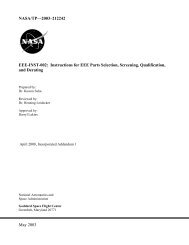

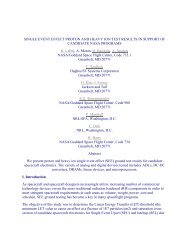
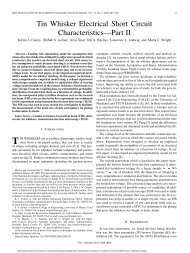
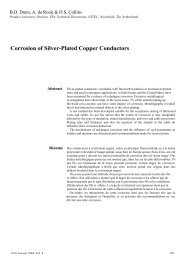
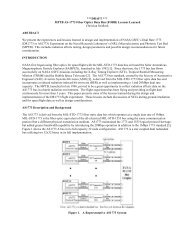

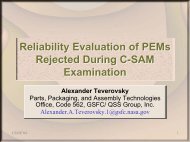
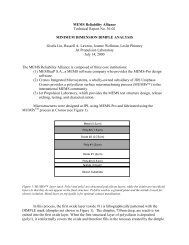
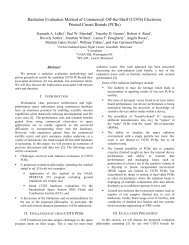

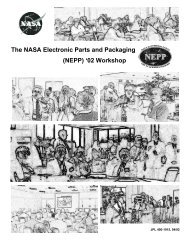

![mil-std-2223 [test methods for insulated electric wire] - NEPP](https://img.yumpu.com/4036001/1/190x249/mil-std-2223-test-methods-for-insulated-electric-wire-nepp.jpg?quality=85)